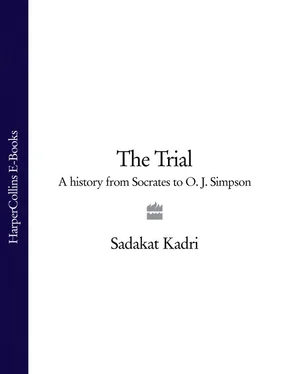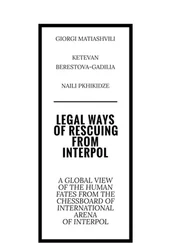A gulf had begun to yawn between Europe’s two systems; and notwithstanding Fortescue’s pride, there is little doubt that the courts of the continent had the stronger credentials. Structured around Roman law and inspired by the belief that justice was a matter of clever men applying their minds to a case, they had both tradition and reason on their side. Those of England, on the other hand, rested on a hotchpotch of superstition. Reliance on the ability of unlettered jurors to administer justice was, quite literally, a relic of barbarism.
And yet, for all its irrationality, England was already producing a method of trial considerably more benign. The notion that some matters were simply unknowable was helping to restrain the temptation to torture: against the bloody record of continental Europe, kings and royal officials would issue no more than eighty-one torture warrants over the entire course of England’s history. English judges were also in a better position – at least potentially – to appreciate human frailty. Denied the right to seek the truth through force and required to sit alongside ordinary jurors, they could say, as Chief Justice Brian did in the late 1400s, that, ‘The thought of man shall not be tried, for the devil himself knoweth not the thought of man.’ And whereas continental justice was becoming a secret process, controlled by adepts who kept a lid on its mysteries until the moment of judgment, English trials were already virtually defined by their openness. The need to assemble jurors made it impossible to exclude the public, and although sheriffs and jailers would extort admission fees until the 1700s, large crowds invariably entered in their wake.
The characteristics of English courtrooms were, like all customs, as accidental as they were determined. They would, however, collectively define a notion of justice that would be of lasting significance – in England first, and then far beyond. And the most important accident of all was publicity, which would now turn the trial from an oath-taking ritual into a dynamic contest of fundamental political and social significance.
The background to the transformation was the crisis that tore England apart in the aftermath of Henry VIII’s break from the Roman Church in the 1530s. Henry, anxious to secure spiritual approval for sexual relations with Anne Boleyn, spent the late 1520s unsuccessfully lobbying the pope for a divorce, eventually growing so irritable that in 1534 he established his own national Church. It was enough, very temporarily, to resolve his marital difficulties, but it also marked the beginning of a very troubled era in English history. Over the next decade, Henry beheaded and divorced his way through another three marriages, decimating English Catholicism in the process. As traditional bonds of religious and national fidelity snapped, his government sidelined regular legal procedures in favour of the rudiments of a police state. Tribunals such as the Privy Council and Star Chamber assumed the power to punish without trial, and the torture chamber of the Tower of London was replenished and used to a greater extent than ever before. Henry simultaneously redefined treason to force his subjects to recognize his new authority or make their opposition apparent. The crime had never been the most tightly defined of offences – capable of penalizing acts ranging from fornication with the royal consort to forgery of a sixpence – but remaining outside its parameters now became an almost acrobatic act. The laws that attempted to keep up with Henry’s marital shenanigans are a case in point. The 1534 Act of Succession suddenly rendered it treacherous to deny the legitimacy of Elizabeth, his daughter by Anne Boleyn, or to assert that of his firstborn Mary. Two years later, another statute granted free pardon to anyone who had asserted the whoredom of Anne or the bastardy of her child. In 1543, with Henry planning an invasion of France, fears of familial oblivion generated a final burst of paternal pride, and he pronounced that anyone who refused to confirm the birthright of either daughter would be hanged, drawn, and quartered.
The oscillations only intensified after Henry’s death in 1547. Edward VI had barely hit puberty when he himself died, aged 15, in 1553, and Mary Tudor then threw the ship of state into reverse by restoring English Catholicism and burning some three hundred Protestants to prove it. Her half-sister, Elizabeth, gave the wheel another turn in 1558. Although conciliatory by temperament, she restored Protestantism as the national religion and soon found herself caught between a regrouping papacy, ambitious monarchs in Spain and France, and a realm on the verge of civil war. In pursuit of peace she flirted politically and socially with almost every eligible Catholic on the continent, but her legitimacy, in every sense, depended on the men of Rome – and they were not to be charmed. Pius V excommunicated her in 1570. Ten years later, Gregory XIII’s Secretary of State let it be known that an assassin could expect not just forgiveness from God, but positive gratitude.
In reaction to the papal fatwa s , Elizabeth’s government mounted an increasingly ferocious assault on the Catholic enemy within. The authoritarian machinery that had taken shape under her father swung into action against religious insurgents real and imagined, while an equally threatening surge of ordinary crime inspired the construction in 1571 of a triple-beamed gallows that would soon become a byword for legal cruelty in England – Tyburn. By the 1590s a visiting Duke of Wirtemberg was able to count more than thirty grinning heads as he strolled across the towers and twenty arches of old London Bridge. Punishments did not just increase in number. Since the reign of Henry VIII, their variety had also been propagating, * and they now flowered into a pattern of dizzying complexity. Minor criminals might be dunked or made to wear a placard carrying the name of their crime. Felons often had the initials of their offence inscribed in their flesh, while those who devalued the royal coin were made to pay with the loss of their ears and nostrils. The symbolic amputation once imposed on libellous printers by Mary Tudor was also revived – claiming, among its first victims, the appropriately named John Stubbes, who exuberantly raised his hat and yelled ‘God save the Queen’ as a mallet was hammered through his right wrist. One case from 1594 can stand as memorial to all the thousands of other butcheries. It concerned five men convicted of a string of felonies ranging from counterfeiting to blackmail: four were sentenced to ‘stand on the pillory and lose their ears if they have any’ before being branded on the forehead with the letter ‘F’. Elizabeth’s most trusted judge, Lord Burghley, complained that such burns healed too quickly and proposed to ten of his fellow Privy Councillors that the Fs should instead be carved into the convicts’ cheeks and have coloured powder rubbed into them. It seems, thankfully, to have been a proposal too far. According to the lawyer who reported the case, ‘the others made no reply to this’.
The spread of corporal punishment was not unusual. Rulers across Europe were relying on the appearance of power to magnify its reality, and in Elizabeth’s realm – riddled by spies, convulsed by rebellions and consumed by crime – the need to show subjects who was in control was a pressing one. But English criminal justice underwent a second, unique, transformation – for it did not use just human bodies as billboards for government authority. At the very same time that the rulers of France and Germany were ending the last vestiges of courtroom publicity, the English government embarked on a deliberate policy of using not just punishments but trials to show where power lay.
Henry VIII had sown the seeds with condemnations of, for example, Thomas More and Anne Boleyn, but it was during the reign of Elizabeth that the strategy reached fruition. Under the hammerbeam roofs and stone vaults of England’s palaces, traitors stood behind solemn pikemen to hear their crimes described and their protestations of innocence ridiculed by some of the finest advocates of Renaissance England. Vast crowds were permitted to attend, and although witnesses were still forbidden to defendants, they increasingly appeared on behalf of the Crown – often very suddenly. At the trial of the Earl of Essex, for example, the Lord Chief Justice stepped down from the benches to testify at the behest of the Attorney-General while a Privy Councillor emerged at one point from a secret listening post to interrupt and contradict the defendant. And when it was all over, convocations of robed judges invited the jurors to consider the question of innocence or guilt. The verdicts rarely surprised. Records of the proceedings, transcribed by squads of stenographers, were then turned into anti-Catholic propaganda and published in English and Latin for the benefit of audiences domestic and European.
Читать дальше




![Theresa Cheung - The Dream Dictionary from A to Z [Revised edition] - The Ultimate A–Z to Interpret the Secrets of Your Dreams](/books/692092/theresa-cheung-the-dream-dictionary-from-a-to-z-r-thumb.webp)







